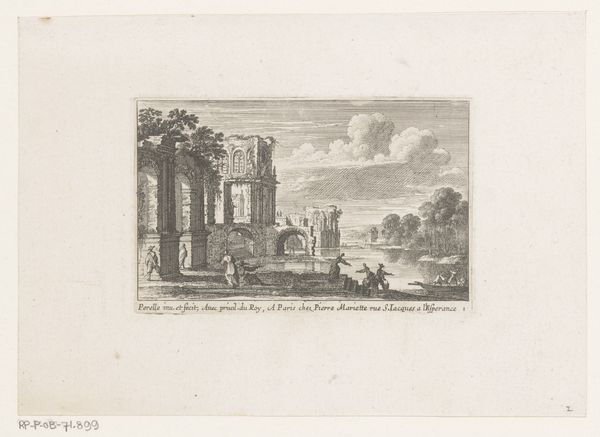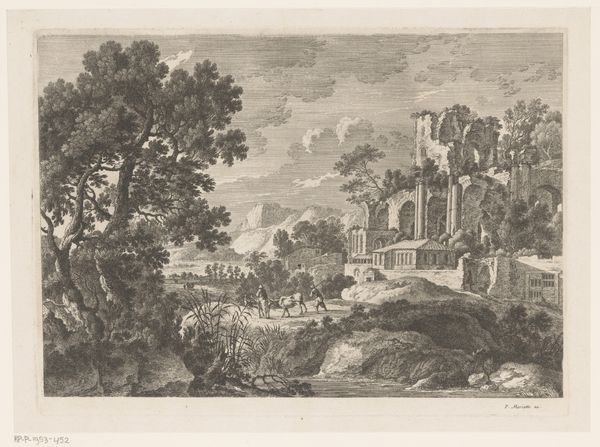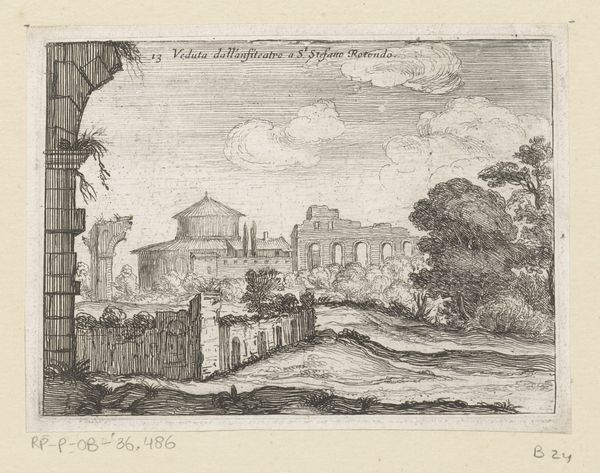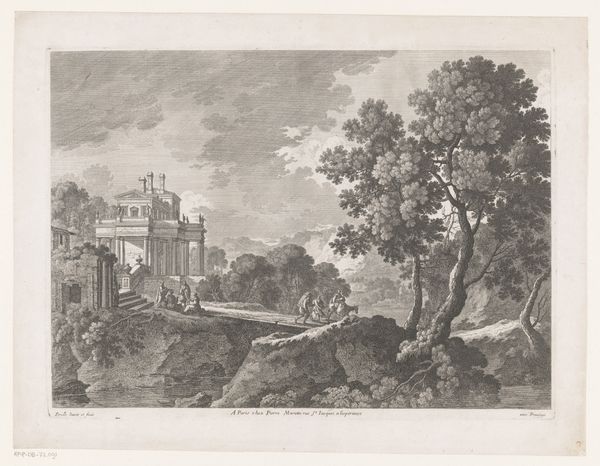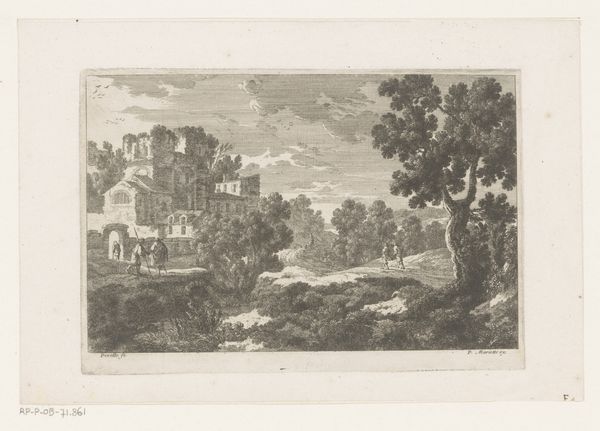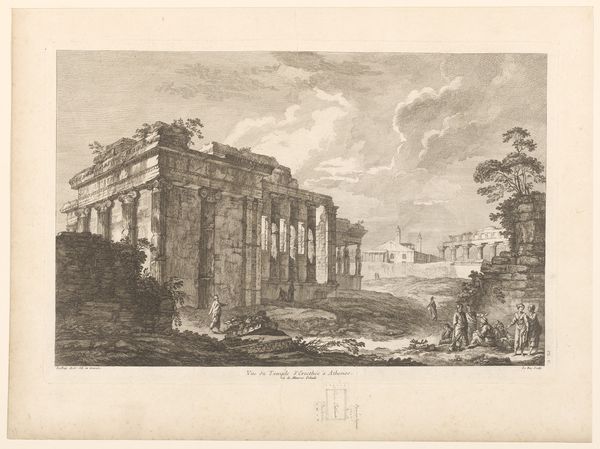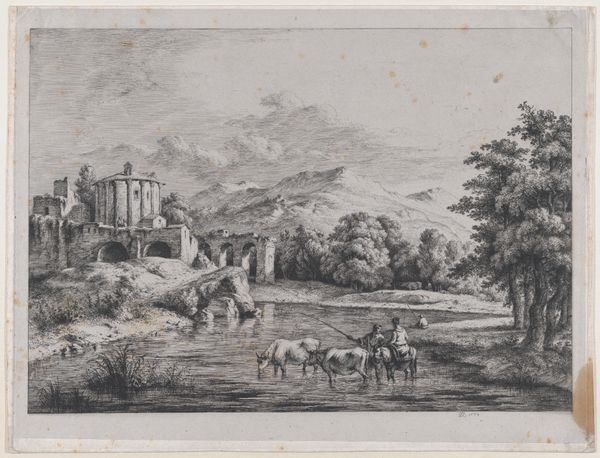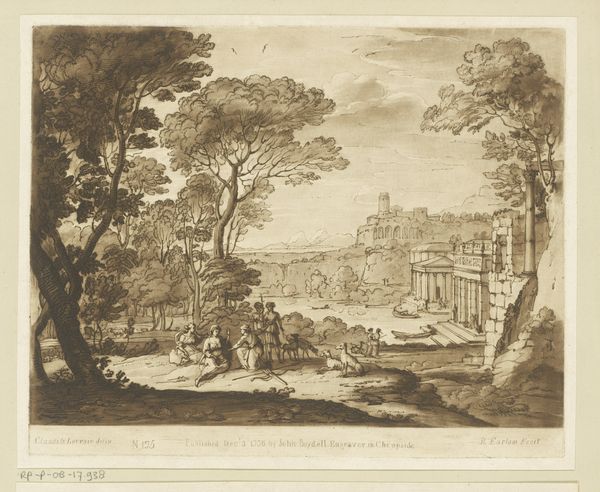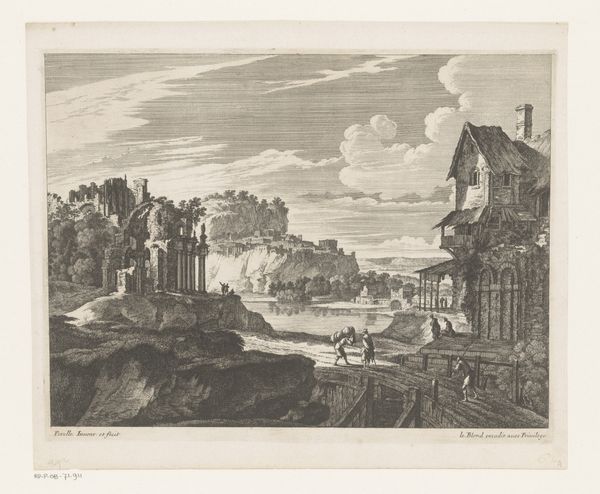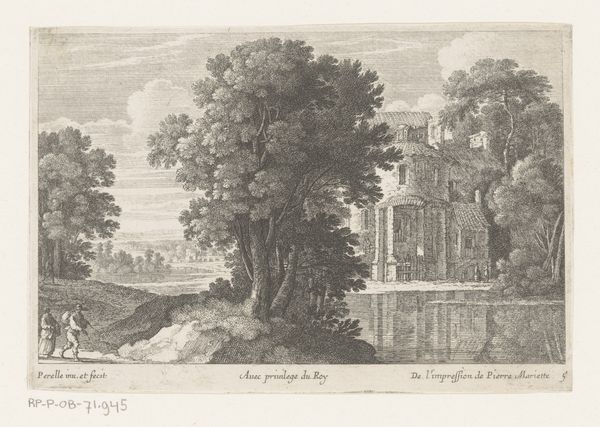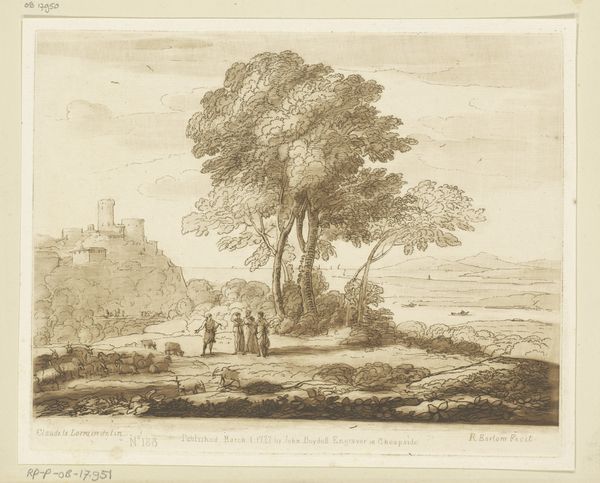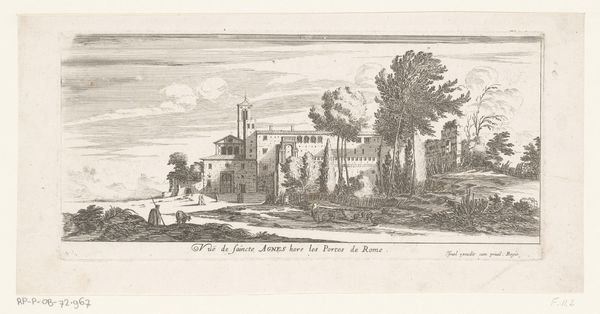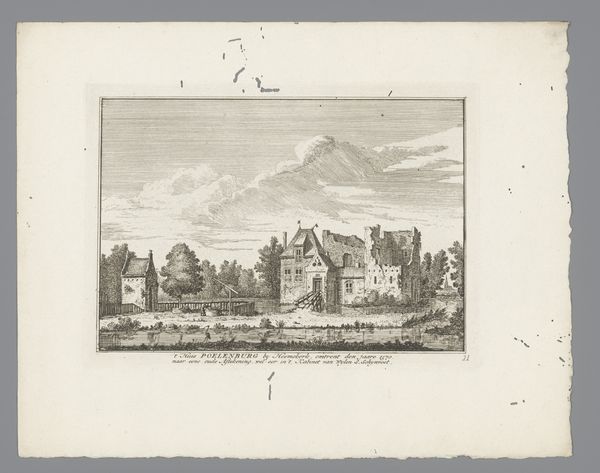
print, etching, engraving
# print
#
etching
#
landscape
#
etching
#
history-painting
#
italian-renaissance
#
engraving
Dimensions: 160 mm (height) x 211 mm (width) (plademaal)
Curator: Welcome. We are standing before Frederik Laub’s "En klosterbygning midt i en italiensk landsby", or "A Monastery Building in the Middle of an Italian Village" completed in 1743. It’s a fascinating print utilizing both etching and engraving techniques. Editor: Ah, instantly calming! The way the light sketches across the buildings, almost like whispers of old stories… I feel like I could wander right into that scene, maybe haggle for some cheese. Curator: Intriguing. Observe how Laub structures the composition. The linear perspective guides our eye towards the monastery, carefully situated amidst the Italian landscape. The foreground elements provide spatial depth, conforming to established academic principles of landscape art. Editor: I see what you mean with the eye being drawn in, it's super calculated. Still, my focus jumps around! Look at the little herd of goats by the fence and the figures going up to the monastery gate… It all feels so alive. The etching is more than just technical skill; it feels like a heartbeat, wouldn't you say? Curator: Certainly. The delicate linework captures the textures of the architecture and natural elements, adhering to neoclassical ideals of precision and clarity, wouldn't you agree? However, note also the presence of ruins in the distance; a quiet commentary on the passage of time and the transience of human endeavors. Editor: True, there is that undercurrent of melancholy, a bit of "dust to dust." Makes you think about how everything shifts and fades. So the history is a little poignant here... it feels like Laub isn't just depicting a pretty view, but capturing a fragile moment in time. A document and memory mixed as one. Curator: Precisely. The artistic intention successfully captures both aesthetic beauty and conceptual depth in the context of 18th-century landscape traditions, don't you think? Editor: Definitely! I came here expecting architectural rendering and instead got a mood, a memory, a question about how fleeting beauty can be, so wonderfully done. Thanks for this, I'm really thinking.
Comments
No comments
Be the first to comment and join the conversation on the ultimate creative platform.
